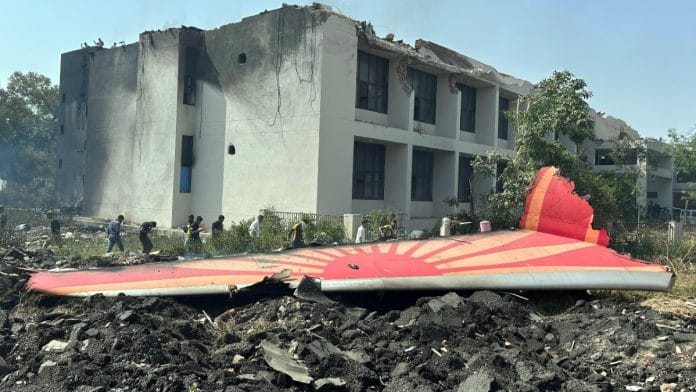Delhi: The word, mayday, was invented by Fredrick Stanley Mockford, a British senior officer radio in charge at Croydon Airport in the United Kingdom in 1923.
It replaced the Morse code S.O.S, which stands for “Save Our Souls”, because “S” was getting lost in transmission due to difficulty in recognising it over phone calls at the time.
On Thursday, Air India flight Boeing 787-8 Dreamliner—AI171—bound for Gatwick, London, from Ahmedabad crashed into the BJ Medical College soon after take-off.
The crash claimed 241 lives onboard the flight and left several medical college students in their building dead, whereas one AI171 passenger miraculously survived.
The final word of the AI171 pilot to the air traffic control (ATC) in Ahmedabad was “mayday”, with no further response.
‘Mayday’: Its origin
“Mayday” is now globally recognised as an emergency distress signal for aviators and mariners. Mockford was assigned the task of finding an easily recognisable emergency call signal against the backdrop of “S.O.S” getting lost during transmission.
During that period, a majority of the air traffic was between Le Bourget Airport in France and Croydon in Britain.
While attending radio calls, Mockford often heard French pilots use a word, “m’aidez”, sounding like “mayday” to the ears of the British officer and meaning “help me” literally. So, he proposed using “mayday” as the emergency distress signal, and the pilots of aircraft crossing the English Channel started using it.
In 1927, at the International Radiotelegraph Convention in Washington, D.C., the United States officially adopted “mayday” as the radio-telephone distress call signal.
Nearly 100 years on, “mayday” is still the aviation phrase that pilots often use to signal distress or emergency signals to ground ATC.
Why it is ‘mayday mayday mayday’
Pilots are required to say “mayday” three times to make the word heard— distinctively. Saying it three times ensures it does not get mixed with other signal transmissions or interferences.
Communication systems between aircraft and ATC have improved substantially over the years, but the protocol has remained unchanged.
After stating “mayday” three times, a pilot needs to communicate various other critical information, if time permits.
“Mayday” is followed by a call sign, the nature of the emergency, current location, height, number of people onboard, and fuel quantity, along with any other information that would help ATC guide the pilots and prepare emergency measures on the ground.
Unfortunately, the AI171 pilots had less than a minute to deliver any information to the ATC, which could have saved the plane. “Mayday”, therefore, continues to remain the most feared word globally for pilots, passengers, and the ATC.
(Edited by Madhurita Goswami)
Also Read: Montreal Convention to decide final compensation for Air India crash victims’ kin. What it say






